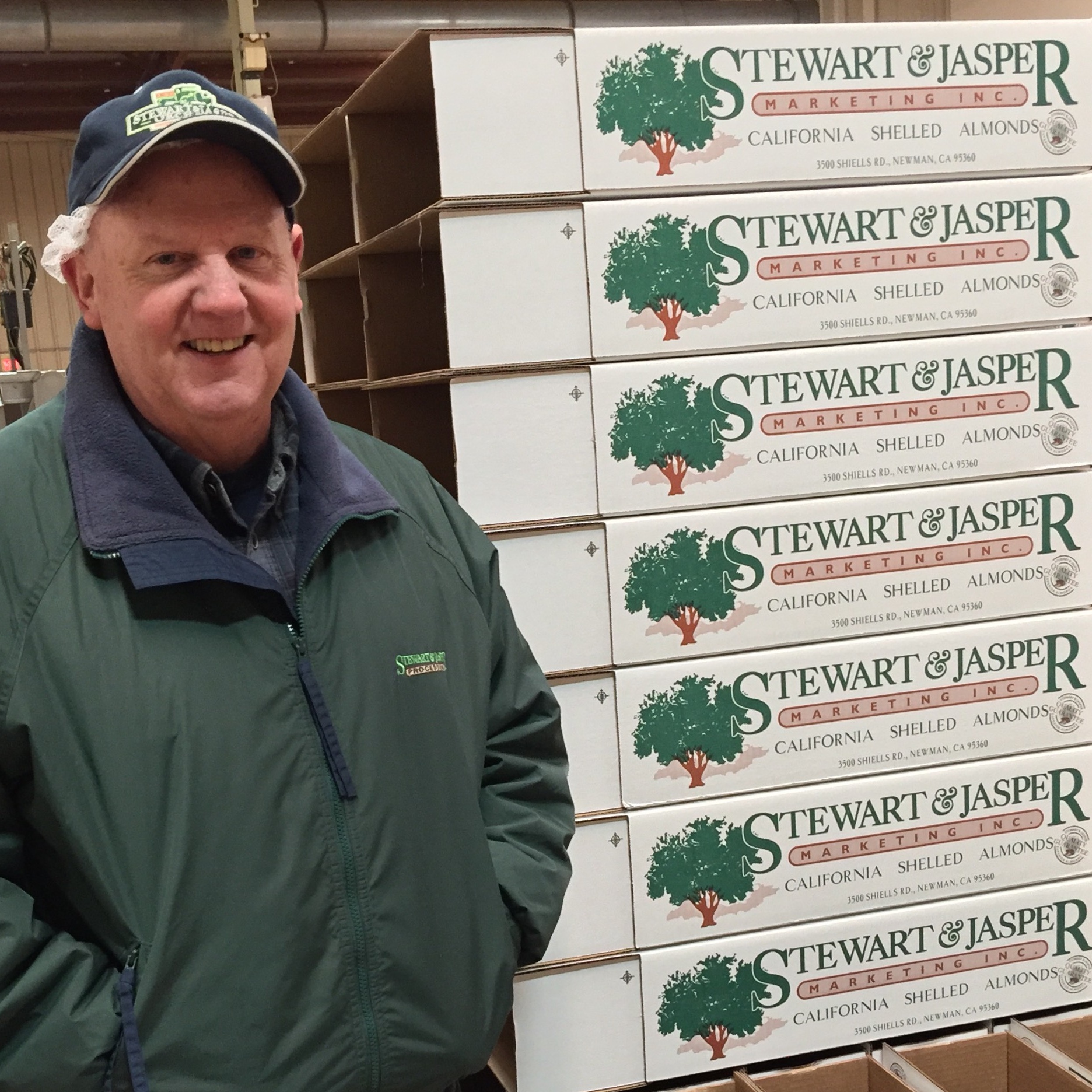Almond Board of California is celebrating its community by running occasional features on farmers, processors, and others who support the industry, highlighting their commitment to sustainability.1
As Rick Marcoux walks through the sterile, florescent-lit room filled with people in white caps and gowns, it isn’t hard to picture him in a much different line of work. Forty years ago, Rick expected he’d spend his career in a hospital. At that time, he was studying to become an X-ray technician in Southern California.
Today, Rick is a processing manager at Stewart & Jasper Orchards in Newman, CA where he and his team take almonds harvested from the field, remove debris and sort them by shape and size and application before packaging them for shipment to confectioners, food packagers, food suppliers and a variety of other customers.

“Processing serves two customers, the grower and the end user,” Rick said. “We must be able to economically deliver a high quality product at a fair price in order to maximize the return to the grower and build great customer relationships.”
Stewart & Jasper processes almonds for over 150 growers and their families who farm a total of 17,000 acres. “The almond industry is the livelihood for so many families, including mine,” said Rick, who has been processing almonds for 30 years.
Rick has come full circle as almond processing adopts many of the same technologies that are deployed to keep us healthy. “We have biometric scanners that measure moisture and oil content to eliminate rocks, hulls and branches,” he said. “We use laser technology to contrast almonds with defects from good almonds. The next machine we will buy will be an X-ray machine.”
At Stewart & Jasper, almonds pass through at least five stages of electronic sorting prior to final hand sorting. The emergence of these new technologies has doubled productivity in the past five years.
 Rick points out that, beyond the benefits to almond processors, increased technology is also benefiting science, technology, engineering and mathematics (STEM) education efforts in the community. “There is a linkage now with schools. We have mentoring programs for high school teachers. They want to see what goes on in an almond processing plant to help educate kids who are looking for future careers in the sciences.”
Rick points out that, beyond the benefits to almond processors, increased technology is also benefiting science, technology, engineering and mathematics (STEM) education efforts in the community. “There is a linkage now with schools. We have mentoring programs for high school teachers. They want to see what goes on in an almond processing plant to help educate kids who are looking for future careers in the sciences.”
Agriculture is a cyclical industry, but processors run on a later schedule than growers do. While harvest represents the end of the season for growers, it’s the beginning of the busy season for Rick. “We normally shut down for one month prior to harvest and tear down all systems to perform preventative maintenance, detail cleaning and painting,” he said. “When harvest begins, it’s like opening season in baseball. Everything is brand new and people are fired up for the start of a new season.”
1 California Almond Sustainability Program definition: Sustainable almond farming utilizes production practices that are economically viable and are based upon scientific research, common sense and a respect for the environment, neighbors and employees. The result is a plentiful, nutritious, safe food product.


